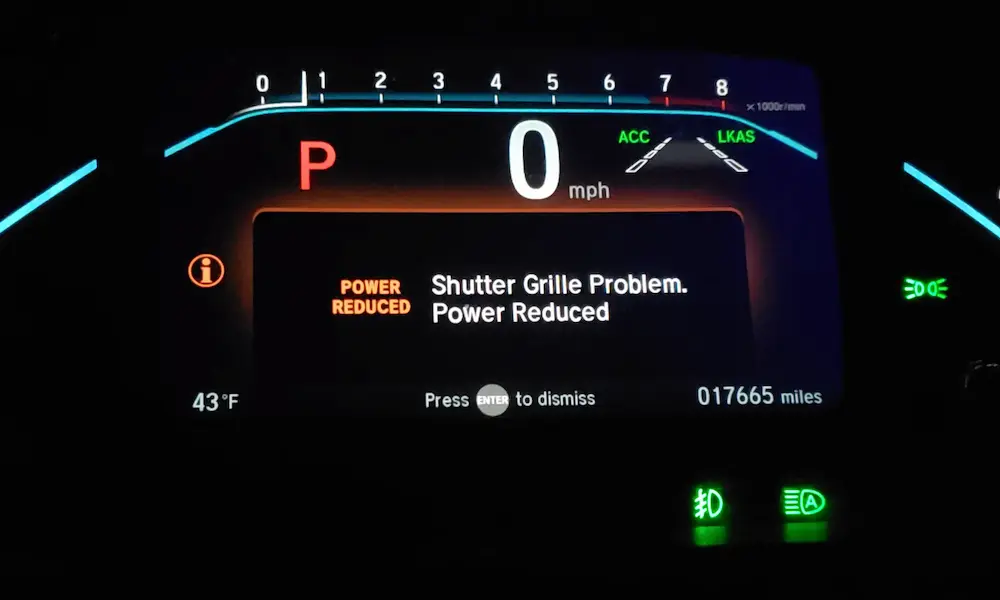If you’re experiencing issues like jerking or slipping while driving your Honda Pilot, you’re not alone. The Honda Pilot has been known for certain transmission problems, especially in specific model years. This blog post can help you understand these issues better and might offer solutions to enhance your driving experience. Keep reading to find out which model years you might want to avoid and how to tackle any existing problems.
Common Transmission Issues in the Honda Pilot
Honda Pilots can experience several transmission issues that are important to know about. Problems include rough shifting, slipping, and fluid leaks. These issues can impact the driving experience and safety. Understanding these signs helps in taking early action.
Signs of Transmission Problems
You might notice some warning signs if your Honda Pilot’s transmission is struggling. Unusual noises like whining or grinding are common indicators. Pay attention to any burning smells, as these could point to overheating.
Another clue is warning lights on the dashboard. If your vehicle doesn’t accelerate smoothly or has delayed responses, these are symptoms to watch. Addressing these signs early can prevent further damage.
Rough Shifting and Hard Shifts
Feelings of rough or hard shifts while driving can be alarming. In a Pilot, you might feel a noticeable jolt when changing gears. This problem often arises from issues such as low transmission fluid or faulty solenoids.
Solenoids control the flow of transmission fluid, and if they malfunction, shifting becomes difficult. Simple maintenance, like checking and changing your transmission fluid, can often resolve these hard shifts.
Lurching Forward and Transmission Slipping
It can be startling if your vehicle suddenly lurches forward or the transmission slips. This usually happens when the transmission loses grip on the gears. You may notice a loss of power or delay when trying to accelerate.
Transmission slipping can result from worn-out gears or low fluid levels. Regular checkups and keeping fluids at the correct levels are effective ways to prevent this.
Transmission Fluid Leaks
Transmission fluid leaks are a serious concern. They can lead to overheating and permanent damage if not addressed quickly. Look for red or brown puddles under your vehicle.
Inspect the seals and gaskets regularly, as these are common leak sources. Using a full synthetic ATF can sometimes reduce leak risks.
Delayed Engagement
Delayed engagement happens when there’s a lag between shifting gears and the vehicle responding. This may mean a few seconds delay when you shift into drive or reverse.
The causes could include low fluid levels or issues with the transmission’s computer system. Regular servicing helps keep engagement responsive, avoiding awkward or risky driving situations.
Repairing Honda Pilot Transmission Issues
If you’re experiencing issues with your Honda Pilot’s transmission, there are several repair methods to consider. These include a drain and fill, torque converter replacement, or addressing faulty solenoids. Identifying the cause of transmission problems early can save you both time and costly repairs.
When to Consider a Drain and Fill
A drain and fill can refresh your transmission fluid without fully replacing it. This is usually needed if your Honda Pilot is showing signs of rough shifting or delayed engagement. You might consider using full synthetic transmission fluid like Valvoline MaxLife along with Honda’s recommended DW-1 for optimal performance.
Repeated drain and fills are often recommended because they help gradually remove old fluid while ensuring the new fluid mixes well throughout. It’s generally a less expensive option compared to a complete flush. Consult with a dealership to confirm if this is the best choice for your situation.
Replacing a Faulty Torque Converter
If you’re experiencing shuddering or slipping during acceleration, it might be due to a faulty torque converter. This component is crucial for transferring power from the engine to the transmission. A malfunctioning torque converter can lead to transmission failure, causing your vehicle to struggle while shifting gears.
Replacement of the torque converter is a more involved process and may require professional help. A certified mechanic or your local dealership can diagnose if this is the source of your issues. Although it’s a more costly repair, addressing the torque converter can significantly improve your driving experience.
Solenoid Repairs and Replacement
Transmission solenoids control the flow of fluid within the transmission. If you notice a delay in gear engagement or shifting into neutral unexpectedly, faulty solenoids might be the problem. Solenoids can become sticky or fail entirely, causing a range of transmission issues.
Repairing or replacing these solenoids usually involves accessing the transmission’s control modules. Special diagnostics tools are used to test solenoid functionality, which might best be handled by a skilled technician. Correctly functioning solenoids are essential for a smooth driving experience, so addressing them can prevent more serious transmission problems down the line.
Honda Pilot Model-Specific Transmission Concerns
When looking at the Honda Pilot’s transmission issues, certain models have specific concerns. One typical issue comes from the VCM (Variable Cylinder Management) and its impact on transmission control. For owners of the Pilot Elite, unique issues also arise.
VCM and Transmission Control
Variable Cylinder Management (VCM) helps improve fuel efficiency. However, it can affect your transmission’s performance. Many drivers find that disabling VCM can reduce these problems. Some have found success by switching to a full synthetic automatic transmission fluid (ATF) like Valvoline MaxLife.
Key Tips:
- Disable VCM: Helps many drivers avoid transmission issues.
- Switch to synthetic ATF: Can enhance protection and performance.
Consider adding a transmission cooler for extra reliability and smoother driving.
Pilot Elite Specific Issues
For those with a Pilot Elite, particular concerns with the 9-speed transmission are noted. Owners often experience jerky acceleration and gear-shifting problems. This transmission, developed by ZF, has been a hot topic in forums.
Possible Solutions:
- Transmission update: Some issues get fixed with software updates or recalibration.
- Regular maintenance: Essential to keep the transmission running smoothly.
Feedback from other drivers can offer valuable insights. Consider discussing similar issues online or with a Honda technician to find optimal solutions.
Maintaining Your Transmission for Longevity
Taking care of your Honda Pilot’s transmission is vital to avoid issues and keep your vehicle running smoothly. Simple maintenance steps and mindful driving habits can extend the life of your transmission, reducing powertrain complaints.
Adapting Driving Habits for Transmission Health
The way you drive plays a big role in the health of your transmission. Avoid rapid starts and stops, as they stress the transmission. Maintain steady speeds when possible. This can prevent unnecessary wear and tear.
When driving your midsize SUV, refrain from towing loads heavier than recommended in the vehicle’s manual, as this can overheat the transmission. Consider using the correct gear when climbing hills to reduce the strain. By making these changes, you help ensure that your transmission lasts longer.
The Role of Regular Transmission Checks
Regular transmission checks are crucial in maintaining your Honda Pilot’s performance. Visit a trusted mechanic for inspections and maintain proper fluid levels. Low or dirty fluid can lead to slipping or jerking issues.
Checking your vehicle history can alert you to any past transmission work or issues. Early detection of problems, like leaks or unusual noises, can prevent expensive repairs in the future. Scheduling regular maintenance and staying informed about your SUV’s condition can prevent many common transmission issues.














